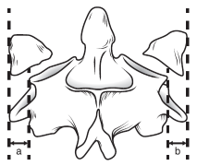Edited by Brendan Striano, Grace Xiong, and Harry Lightsey - 7/1/2021
This is a basic overview for review of Cervical CT scans. Specific injury patterns will be addressed elsewhere.
Basics
1) Add Pt to Spine List
Ensure that Ortho is on call and not established NSG patient
2) Call consulting team back to get narrative
3) General things to know immediately
Mechanism; Gross neuro deficit?; Anticoagulation?
Imaging Set Up
1) Set up a 2x1 window (side-by-side)
2) Typical convention is to have Sagittal image on left and Axial on right
3) Make sure that contrast is set to “Bone Window”
4) Link images to get the line that tracks where you are from one view to another
This is often a paperclip icon, chainlink icon, or a cartoon of a radiograph with tracking lines overlaid
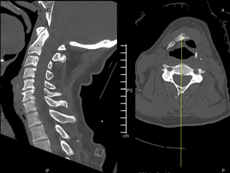
Things to Assess on Sagittal
Each of these should get its own, dedicated scroll through the entire sagittal CT scan
1) Atlanto-Occiptial Joint
Multiple measurements can be made, but on initial assessment, OK to assess 30000 ft view
Joint Congruence
Fracture of the Occipital Condyle
Anterior Soft tissue swelling - to assess hypothetical scenario of Atlanto-Occipital dislocation without fracture than has subsequently perfectly concentrically reduced
2) Dens
Assess for Fracture
Assess Atlanto-Dens Interval (ADI): <3mm: Nml; 3-5mm: Transverse Ligament Injury; >5mm: Complete Ligament Disruption
Posterior Atlanto-Dens Interval (PADI or “Space Available for the Cord” (SAC)): >13mm: nml
Note that there can be congenital narrowing that does not reflect a post-traumatic finding
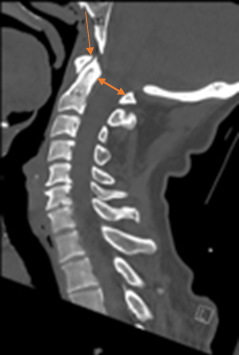
3) Mid Sagittal Alignment
Each should get its own dedicated run through the CT Scan
Evaluate Anterior / Posterior Vertebral Lines, Spinolaminar Line, and Interspinous Line
Barring some allowance for degenerative change in the elderly, the lines should all be smooth, gentle transitions
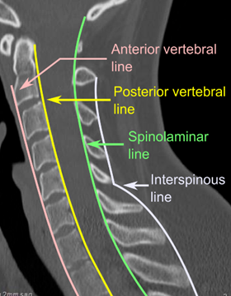
4) Facets
Both Left and Right facets should get a dedicated run through the CT scan
Facets should “shingle” smoothly
Look for asymmetric widening between facets
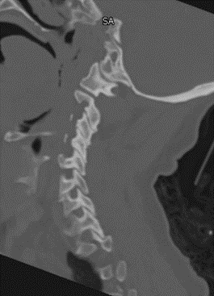
5) Vertebral Bodies
Assess for vertebral body irregularities to suggest fracture
Assess spacing between vertebral bodies
Disc spaces should be symmetric
6) Spinous Processes Assess Spinous Processes for fracture
Things to Assess on Axial
1) Evaluate the “ring” at each level to assess for fracture
2) Correlate axial cuts with any suspicious areas on the sagittal
3) Good to evaluate for compromise of the spinal canal
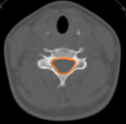
**4) Assess if previously identified fractures violate the Transverse Foramen
Things to Assess on Coronal
1) Second Assessment of Dens for Fracture / Fracture Characterization
2) Assess Lateral overhang
Can also assess Lat overhang on Open Mouth AP XR. >7mm indicates C1-2 Instability due to Transverse Ligament Injury
